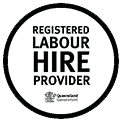This article looks at the latest developments in real estate workforce analytics. Read on to find out how real estate firms are boosting productivity and therefore profits with new analytics services.
Recent seismic changes prompted by the global pandemic saw existing trends, such as the adoption of digital, data-led workforce analytics solutions, accelerate. The advent of super-fast 5G, artificial intelligence, software-as-a-service, and the Internet of Things, is transforming the very nature of work, real estate included.
But are real estate firms doing enough? Or is it a case of too little, too late?
A 2021 survey of commercial real estate (CRE) firms by Deloitte that looked at trends in real estate like the rush to digitalise and engage employees within a virtual environment, noted that CRE companies had lagged peers in other industries when it came to the adoption of various technologies, and that the pandemic had exposed real estate businesses’ digital shortcomings. These were partly the result of a more traditionally skilled workforce. Indeed, a 2015 Forrester Consulting survey of CRE companies found only 28% of respondents described their firm’s then use of data and analytics as “data-centric”.
Given the transformation underway today, including the return to work, hybrid working models like flexible work, and rising demand for tech skills coupled with tight supply, it is vital that CRE companies digitalise their work processes and revamp talent strategies to catch up. Looking ahead to the impending automation of vast swathes of the economy, firms that don’t digitalise will likely end up becoming uncompetitive. Talent, therefore, is a key differentiator.
The Asian Perspective on Real Estate Workforce Analytics
While many of the transformational changes currently underway are global, American commercial real estate services and investment firm CBRE notes in a report that there are some elements which are more pronounced in places like Hong Kong. For example, Millennials comprise some 25% of the workforce in Asia-Pacific, and this cohort has different desires and needs when it comes to their careers. Arguably, these needs are not being met.
In a country with a higher ratio of Millennials in the workforce, like the UK, where according to KPMG 35% of the workforce was in 2017 composed of members of this group, these differentiated needs have already risen to prominence. A PWC survey found 41% of Millennials prefer to communicate through digital channels, for example.
Millennials are living with their parents longer, care more about commuting time and office location, and are more focused on wellness than their predecessors. These attributes have important implications for real estate recruitment.
Attracting and then retaining members of this workforce demographic will determine business success down the road. This is sobering reading for companies based in Hong Kong, where a decreasing talent pool, combined with economic recovery is driving a skills shortage. Not only that, but a recent IDC survey found only 28% of Hong Kong respondents found their work satisfying and engaging.
Hong Kong has built a reputation as a real estate hub, partly because of its proximity to mainland China, which experienced a massive housing boom, and its adoption of specialised construction techniques like reclamation. This success story translates to increased demand for talent. And not only that, but the skills required are increasingly tech related. Whether it’s remote property manager jobs, leasing consultant jobs or commercial real estate jobs, the skillset required is quickly changing.
Hong Kong Real Estate Embracing the Change
Real estate workforce analytics is a key pillar of the business environment’s digital transformation. Despite a slow start, real estate firms are catching up, and fast.
Advanced data analysis methods and metrics, used to comprehensively measure workforce performance, are being rolled out rapidly. These analytical tools delve into staffing, recruitment and training, as well as compensation and benefits. The metrics include commonly accepted data sets, such as retention rates, acceptance rates and cost per hire, for example.
Today’s sophisticated workforce analytics are helping more and more real estate companies to firstly identify and then attract and develop the right talent. For example, workforce analytics can be deployed to streamline the recruitment process through identifying the characteristics of successful hires and then evaluating future candidates against those criteria. The result is a faster recruitment process and a more effective hiring strategy, which feeds through to the bottom line via improved productivity and decreased attrition rates.
Another useful aspect of workforce analytics is it enables firms to benchmark themselves against the competition. McKinsey reports that companies deploying digital workforce analytics see an 80% increase in recruiting efficiency and a 25% boost to productivity across the business. Such dramatic improvement would turbo-charge most real estate companies’ competitive advantages.
Looking to the future, a comprehensive workforce analytics solution provides predictive analytics. Instead of using data to understand events and developments that have happened, predictive analytics draws on statistical analysis of patterns and trends to predict what will likely happen in the future. Armed with this knowledge, real estate firms are able to exert a great degree of influence on future events.
Simply put, real estate companies can make better decisions when informed by real-world data and analytics.
While digital workforce analytics isn’t an all-powerful panacea that will cure every real estate company’s recruitment ills, this approach has been proven to be effective, and will future-proof businesses against the onward march of cloud-based work, the rise of mobile devices, a talent squeeze and new work models.
Share what is your experience with real estate workforce analytics in Hong Kong – get in touch with our team or follow Juan Dorfling, Gough Recruitment MD, Asia, on LinkedIn. We would be glad to receive the feedback!





